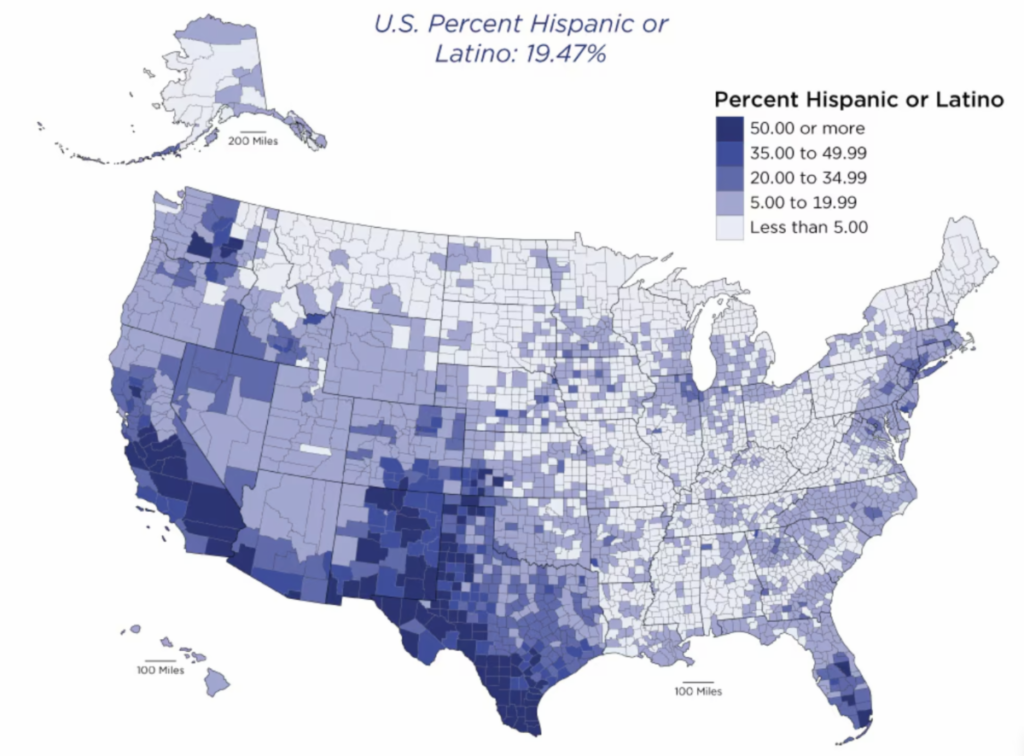
Hispanics accounted for 71% of the overall growth of the U.S. population between July 2022 and July 23, the Census Bureau reported last month. The number of Hispanics of any race grew by 1.8% during that time, while the non-Hispanic population grew by just 0.2%. Put another way, by July 2023 we had 1.16 million more Hispanics in the country than the year before and only 480,000 more non-Hispanics.
Two thirds of the growth came from what’s called “natural increase”—more births than deaths—while immigration provided the rest. Hispanics of any race now represent 19.5% of the U.S. population.
Forty-three states and 73% of all U.S. metro area saw population increases between 2022 and 2023, often because of Hispanic gains. “Among the nation’s 3,144 counties, 59% (1,864) had populations that grew from 2022 to 2023,” the Census Bureau reported. “Of these, 38% (716 counties) gained more Hispanic than non-Hispanic people. The five largest counties where total population increased due to Hispanic population growth (offsetting non-Hispanic population declines) were: Broward County, FL; Dallas County, TX; Miami-Dade County, FL; Riverside County, CA; and San Bernardino County, CA..

